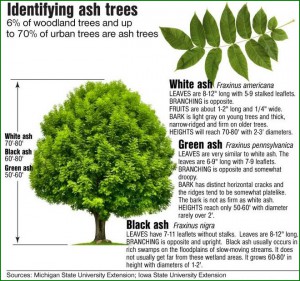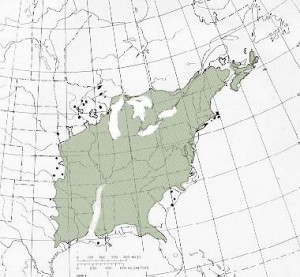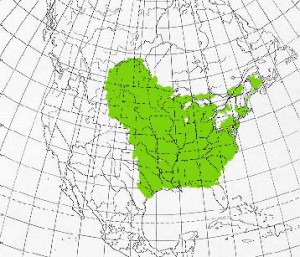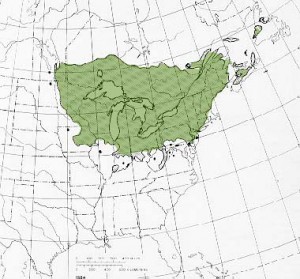Mauget recommends Imicide for effective, season long control of Emerald Ash Borer.
Emerald Ash Borer (Agrilus planipennis)
In North America, it has only been found in ash trees.
Trees in ash trees native ranges, woodlots as well as landscaped areas are all affected. Larval galleries have been found in trees or branches measuring as little as 1-inch in diameter. All species of North American ash appear to be susceptible.

White Ash (Fraxinus americana)
White ash (Fraxinus americana), also called Biltmore ash or Biltmore white ash, is the most common and useful native ash but is never a dominant species in the forest. It grows best on rich, moist, well-drained soils to medium size. Because white ash wood is tough, strong, and highly resistant to shock, it is particularly sought for handles, oars, and baseball bats. The winged seeds provide food for many kinds of birds. The name White Ash derives from the glaucous undersides of the leaves. It is similar in appearance to the Green Ash, making identification difficult. The lower sides of the leaves of White Ash are lighter in color than their upper sides, and the outer surface of the twigs of White Ash may be flaky or peeling. Green Ash leaves are similar in color on upper and lower sides, and twigs are smoother. Despite some overlap, the two species tend to grow in different locations as well; White Ash is a forest tree that commonly occurs alongside Sugar Maple while Green Ash is a pioneer species that inhabits riparian zones and disturbed areas.

White ash is deciduous tree whos flowers appear with or just before the leaves in April and May. A good seed crop is produced about every third year. The time between the first noticeable enlargement of the male flower buds until shedding is 2 to 3 weeks. Pollen shedding from an individual tree usually takes 3 or 4 days. The pollen is carried by wind as far as 100 in (328 ft) from the point of dispersion.
Green Ash (Fraxinus pennsylvanica)
Native to eastern and central North America, from Nova Scotia west to southeastern Alberta and eastern Colorado, south to northern Florida, and southwest to eastern Texas.
It is the most widely distributed of all the American ashes, although its range centers on the Midwestern US and Great Plains. It has spread and become naturalized in much of the western United States and also in central Europe from Spain to Russia.
It is a medium-sized deciduous tree reaching 12–25 m (rarely to 45 m) tall with a trunk up to 60 cm in diameter. The bark is smooth and gray on young trees, becoming thick and fissured with age. The winter buds are reddish-brown, with a velvety texture. The leaves are 15–30 cm long, pinnately compound with seven to nine (occasionally five or eleven) leaflets, these 5–15 cm (rarely 18 cm) long and 1.2–9 cm broad, with serrated margins and short but distinct, downy petiolules a few millimeters long.
They are green both above and below.
Black Ash (Fraxinus nigra)
Native to much of eastern Canada and the northeastern United States, from western Newfoundland west to southeastern Manitoba, and south to Illinois and northern Virginia.[1] Formerly abundant, as of 2014 the species is threatened with near total extirpation throughout its range, as a result of infestation by a parasitic insect known as the emerald ash borer.

Black ash is a medium-sized deciduous tree reaching 15–20 m (exceptionally 26 m) tall with a trunk up to 60 cm (exceptionally 160 cm) diameter. The bark is grey, thick and corky even on young trees, becoming scaly and fissured with age. The winter buds are dark brown to blackish, with a velvety texture. The leaves are opposite, pinnate, with 7–13 (most often 9) leaflets; each leaf is 20–45 cm long, the leaflets 7–16 cm long and 2.5–5 cm broad, with a finely toothed margin. The leaflets are sessile, directly attached to the rachis without a petiolule. The flowers are produced in spring shortly before the new leaves, in loose panicles; they are inconspicuous with no petals, and are wind-pollinated. The fruit is a samara 2.5–4.5 cm long comprising a single seed 2 cm long with an elongated apical wing 1.5–2 cm long and 6–8 mm broad.

